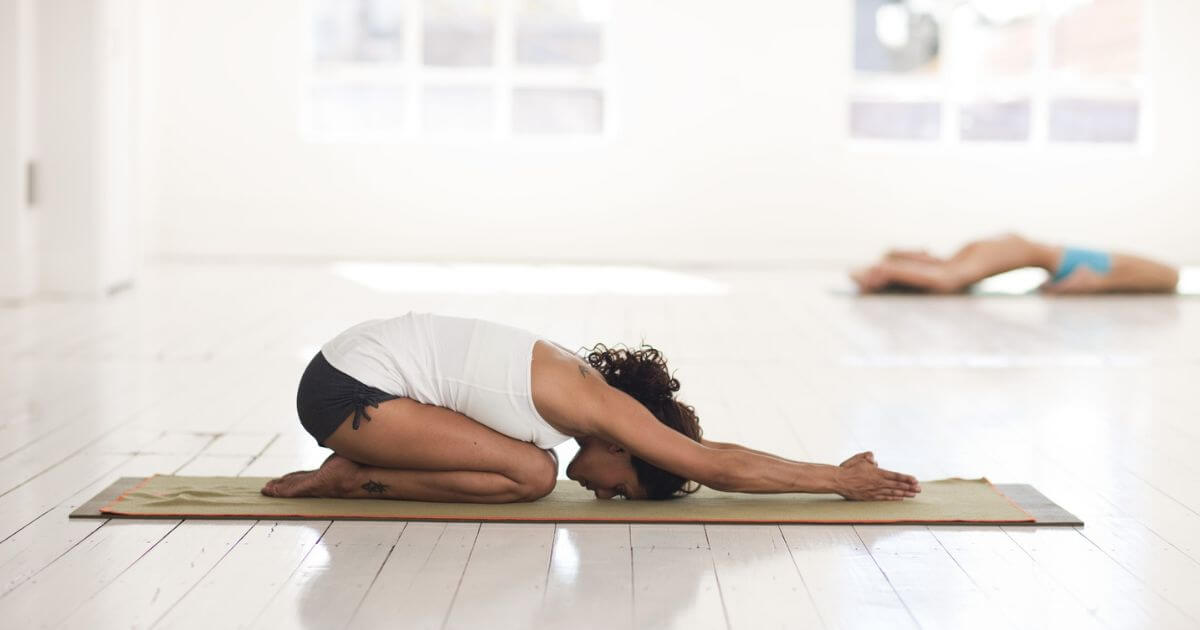
Stretching is often one of the most overlooked exercises by people. Most users see stretching as boring and boring, considering it involves slow and controlled movements.
Other people believe that stretching is only good to become more flexible, and while that’s true, stretching exercises can do an excellent job of promoting your health.
Stretching, in fact, is something that can help you decrease the risk of cardiovascular disease while improving your blood flow and the health of your blood vessels.
There are many benefits of stretching for your heart health, and we’ll cover those today. Keep reading if you want to know more about how stretching will benefit those who want to avoid cardiovascular disease or high blood pressure.

Let’s dive deep into all the benefits of active/passive stretching. Once you read through the entire list, you will notice how amazing this simple yet effective method of working out your body can lead to much better health.
1. Flexibility and Range of Motion
Aging is the primary factor that will affect your mobility in the future. As you get older, you will notice how you won’t be able to perform the same tasks you did when you were younger.
While flexibility and range of motion aren’t directly related to heart health, keeping good mobility will help you reduce the risk of health problems in the future.
2. Improved Blood Flow
Stretching is an activity that requires you to focus on your breathing and muscles. Stretches for the heart will help you achieve lower blood pressure and heart rate, as well as decrease your peripheral arterial stiffness.
Combining aerobic exercise with stretches for heart pain can promote blood flow. Good blood flow leads to less damage on your artery walls, which will decrease your risk of suffering a stroke/heart attack or getting a blood clot (pulmonary embolism).
3. It’s Easy to Do
Aside from being able to reduce the risks of heart disease/vascular disease, stretching is fairly easy to do. Even if you go for passive stretching, these won’t take you more than a few minutes to figure out.
If you’re dealing with a lot of arterial stiffness or pain, you will notice resistance and a bit of pain at first, but that’s normal. Regular active/passive stretching sessions will help you feel lighter and healthier.
4. Faster Recovery
The increased blood flow that comes from stretching will allow you to recover from your workouts much faster. Good blood flow to your major muscle groups will allow them to stay in shape for your next workout session, which will decrease many risk factors that come from anaerobic/aerobic exercise.
5. It’s a Great Complement to a Healthy Diet
The best way to avoid vascular disease goes beyond stretching properly. Some other factors include managing high blood pressure and high blood sugar, promoting weight loss through healthier diets, and more.
High cholesterol, for example, is a factor that can lead to complicated heart disease in the future. Aside from passive stretching training, you should also consider what you’re eating and how well you’re resting if you want to promote better vascular health.

Both types of stretching are excellent to increase the health of your blood vessels, control high blood pressure, and improve your heart health in general. However, there’s a slight difference:
Active stretching focuses on using one muscle group to stretch another like when you use your right hand to reach out to your left leg while it’s stretched out and vice versa.
On the other hand, passive stretching involves using any external force to help you stretch. The “resistance” often comes in the form of resistance bands or objects, although you can also get a partner to help you get a good stretch.
In most cases, active stretching is commonly used as a warm-up, whereas passive stretching is used as a cool-down after a workout. Both options will promote good blood flow and better health for your blood vessels.

Now that you know how stretching can help you fight off high cholesterol, irregular blood pressure, and vascular disease in general, let’s address some common stretches you can start doing today.
Reclining Figure-4 Stretch
Standing Hip Flexor Stretch
Seated Head-toward-knee Stretch
All three of these leg stretches are great to promote better heart health and vascular function, and they’re easy enough for beginners, so don’t hesitate to try these at home.

Stretching is a no-brainer for most people. However, doing it wrong could cause adverse effects that could jeopardize your heart health. Consider the following tips next time you do flexibility exercises:
Stretching, by itself, will be excellent for your body, but if you combine it with a nice Mediterranean or another plant-based meal diet, you will have a much better time in your weight loss journey.
Even if you’re not looking to lose weight, stretching will help you prevent a heart attack and other types of heart disease. In essence, stretching is ideal for keeping proper cardiovascular health. Stretching has also proven to be great for reducing stress levels, so consider trying it out whenever you feel anxious.
It depends on the person and the activity you’re doing. Stretching will likely keep your heart rate lower when you finish. A nice stretch test for the heart involves stretching for approximately three minutes and comparing your heart rate when you started and finished.
In regular exercise, your heart rate will start to drop below 100 beats per minute three minutes after you exercise, so you could take that as a starting point. Still, remember that these cases may vary from person to person.
Yes! Many stretching exercises for heart patients will do wonders at preventing heart disease through better blood flow and stronger vessels. Even if you’re not a heart patient, doing stretches for heart health will be beneficial for you in the long run.
Yes. Stretching is good for your heart in general, but one of the best things about it is that it helps deal with high blood pressure.
Copyright © CardiacKrock.com. 2022 All rights reserved. | Sitemap